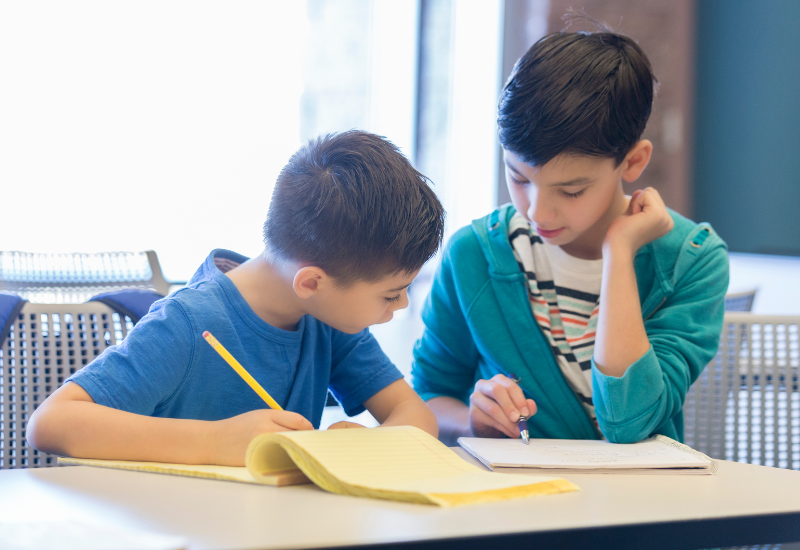Example: One-on-One Student Support at LPS Richmond
In this audio clip, you'll hear an example of how LPS teacher Sophia Thomas works one-on-one with a student.

Transcript:
Teacher (Sophia Thomas): Tell me what 3.15 is about?
Student: Equivalent fractions.
Teacher: What are equivalent fractions? I'm a third grader. I want to know what equivalent fractions are. How would you explain it to me?
Student: Probably [student quietly explians]
Teacher: Which kind are equivalent?
Student: This kind.
Teacher: What is that equivalent to?
Student: I don't know.
Teacher: It's equivalent to this. Look where you wrote your equal sign.
Student: Oh, okay. Now I get it.
Teacher: So, what's equivalent?
Student: This one.
Teacher: Is equivalent to?
Student: This one.
Teacher: Give me another example.
Student: Two into, by two equals – wait, no.
Teacher: That's fine. Keep going.
Student: One.
Teacher: If I ask you to draw a picture of both of these, what would the picture look like? Is there anything that would stand out about the pictures?
Student: Yeah.
Teacher: What?
Student: Some things are different.
Teacher: I would go with the smaller number or if you're doing this I would use rectangles because it's hard to break circles up and where you're trying to use rectangles that are the same size, that's important.
Student: So, we have three rectangles?
Teacher: No. You have one rectangle and you're breaking it up into how many parts?
Student: Twelve.
Teacher: Either you're focusing on this one or this one. I would focus on this one. It has smaller numbers. So, you're breaking that rectangle up into how many parts?
Student: Four.
Teacher: You should try to make them equal parts.
Student: Oh, let me start over.
Teacher: Good. So, how many parts should you shade?
Student: Two.
Teacher: You're going to draw another rectangle. How many parts is that rectangle going to be broken up into?
Student: Three.
Teacher: How many parts are you shading?
Student: One.
Teacher: Tell me what you notice about the shaded portion.
Student: They're both equal.
Teacher: So, if fractions are equivalent, what does that actually mean?
Student: That when you – I don't know what they're [Unintelligible].
Teacher: They have the same what?
Student: [Unintelligible]
Teacher: Very good. What's next for you right now?
Student: I need to work a little more [Unintelligible]
Teacher: So, you're going to be taking notes. You're going to be taking notes on [...] fractions.
Student: Yes.
Teacher: That's it. Good job.
Explore More

Gulfport Virtual Academy's Approach to Targeted, Relevant Virtual Learning
Through their participation in TLA's Strategy Lab: Virtual & Hybrid program, Gulfport Virtual Academy designed and piloted a program to...

Setting Clear Expectations for Student Engagement (KJ Virtual Academy)
Through their participation in TLA's Strategy Lab: Virtual & Hybrid program, KJ Virtual Academy designed a pilot program that outlined...

Addressing Student Engagement Through Hybrid Project-Based Learning (Cabarrus Virtual Academy)
Cabarrus Virtual Academy designed and piloted a project-based learning (PBL) lesson for middle-school students to provide them with...